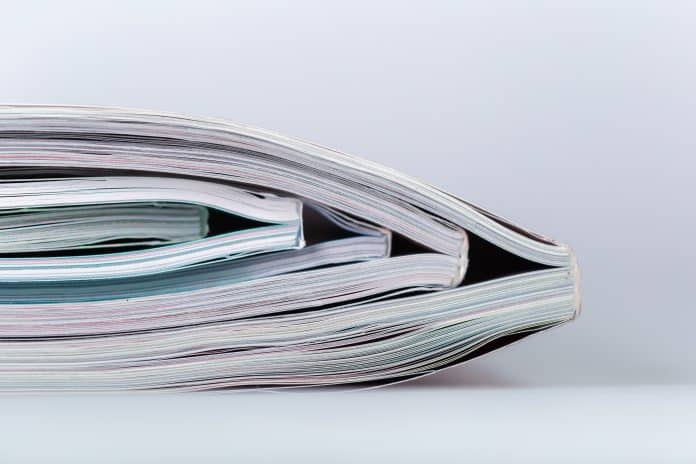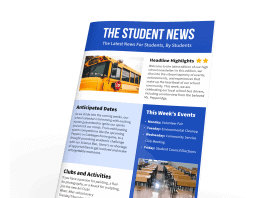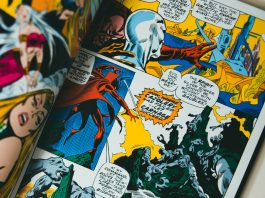Last updated on August 6th, 2024 at 02:00 pm
In the printing industry, soft-cover printing projects such as books, magazines, and catalogs are bound using a process called perfect bound booklet printing. This involves gluing the pages of the book to a spine and then attaching a cover. It’s called “perfect” because the pages and the cover are all cut to the exact same size, allowing them to line up perfectly during the binding process.
Perfect binding offers several advantages over hard-cover binding. These include:
- Lighter
in weight - Strong,
durable binding - Lower
cost than hardback
If you’re wondering, “what type of glue is used to bind paper?” in perfect binding, there are two basic methods to choose from:
- PUR (polyurethane reactive) binding
- EVA (ethylene-vinyl acetate) binding
Both processes are used by print finishing companies. However, PUR book binding is rapidly overtaking EVA as the preferred method of perfect binding. If you have a print project that requires soft-cover binding, understanding the differences between the two methods can help you choose the correct binding technique for your needs.
When PUR binding was first introduced, industry professionals debated over the merits of PUR vs. EVA glue. These days, PUR is generally recognized as the better binding process. However, there are times when EVA is a more appropriate choice. Both binding processes are very similar. In fact, the main difference between the two is the type of glue used to hold the book together (hence the PUR vs. EVA glue debate). However, there are other factors that come into play, including the thickness of the book, what the product will be used for, and the cost of the print finishing process.

PUR vs. EVA glue
An examination of the perfect binding process starts with understanding the differences between the two types of glue.
As a polyurethane reactive material, PUR makes a highly effective adhesive because it can form strong bonds to many different materials. Its properties can be controlled, depending on the reactive components used. The bonds develop quickly and provide good initial bond strength.
EVA is an ethylene vinyl acetate, or “hot melt,” adhesive. It is polymer based and thermoplastic in nature, which keeps it solid at room temperatures. EVAs don’t require water or solvents to achieve their adhesive properties. This gives them a fast set time and a longer shelf life.
Binding books with PUR adhesive is very similar to the traditional EVA glue perfect binding process. Different notching, roughing, and equalizing heads are used to create fiber. The adhesive then bonds with these fibers during the curing process. PUR properties draw moisture out of the air during the curing process, which creates a stronger bond than EVA. In fact, PUR bond strength can be as much as 50% greater than EVA once the adhesive application has fully set.
PUR bonds are also more durable, offering greater stability as the book ages. The binding is fully resistant to print ink oil migration and can bond to coated and uncoated stock. In addition, PUR doesn’t experience the problems with extreme temperatures that can affect traditional EVA binding. Once cured, EVA adhesives can be reactivated with heat, causing them to melt. PUR creates a strong elastomeric film that isn’t subject to reactivation. As a result, PUR won’t re-melt under high heat. Conversely, EVA adhesives can become brittle and crack in extremely cold temperatures. PUR won’t crack because it can’t be reactivated.
Not only is PUR binding stronger than EVA, but it is also more flexible. The inability to be reactivated after setting gives PUR its strength and durability. PUR binding applies a thinner coating of adhesive than EVA, which makes it more flexible. This superior flexibility enhances PUR’s ability to lay the book flat without damage. Using less adhesive also creates less distortion of the spine and a cleaner appearance.
Why PUR beats EVA
Both PUR and EVA offer good quality binding of soft cover printed materials. However, in terms of PUR vs. EVA glue, the advantages offered by PUR far outweigh those of EVA binding.
PUR:
- Requires less adhesive during the binding process
- Is more flexible than EVA and offers better lay-flat abilities
- Higher cold and heat resistance, allowing books to be stored and used in extreme temperatures
- Can bind a wide variety of paper stocks, including varnished, UV-coated, carton, recycled, and more
- Can’t be damaged by oils used in the digital print process
- Doesn’t allow ink migration into the spine
- Has better “page pull” results compared to EVA
- Offers better handling of cross-grained stocks
- Provides a stronger bond, which is ideal for high page count books
EVA offers:
- Fast
curing of only a few seconds - Lower
cost than PUR binding - Ease
of operation - Faster
cleaning of the binders - More
cost-effective binding option
EVA also works better when binding thread-sewn books because the thicker glue does a better job of penetrating into the spine area of the folded sections.
PUR – The best in soft cover binding
At Printivity, we offer both glue options for our perfect bound books. As the strongest, most durable binding product available, PUR delivers a 50% stronger bind than traditional EVA glue. Suitable for most types of softcover print pieces, PUR binding provides the ultimate in durability for printed materials that need to last. Plus, you can choose from a vast array of paper and finishing options to fit your brand. EVA and PUR glues both have their advantages, so take the time select the option that will work best for your project. Whether you’re self-publishing a book or printing a corporate report for the board of directors, give your readers the ultimate reading experience with PUR binding from Printivity.
If you still have any questions about PUR or EVA perfect bound books, please contact our customer service representatives at 1-877-649-5463 or service@printivity.com.




